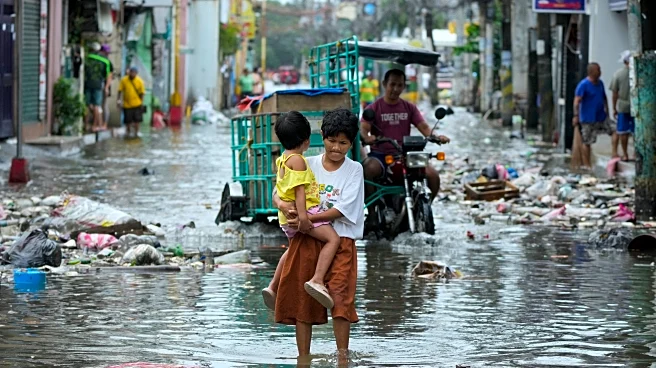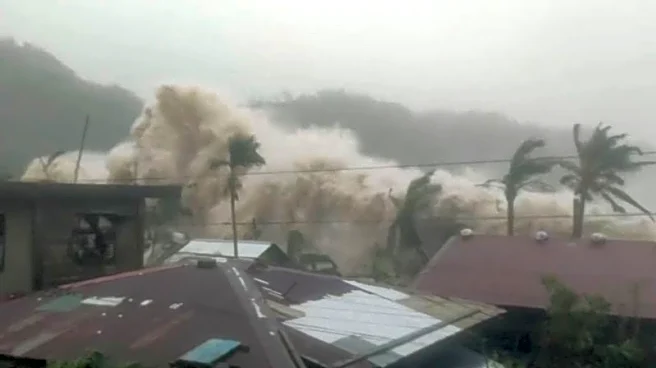What's Happening?
Taiwan has issued a land warning and evacuated over 3,000 residents in anticipation of Typhoon Fung-wong's arrival. The typhoon, although weakening, is expected to bring heavy rainfall to Taiwan's mountainous
eastern coast. The storm is forecasted to make landfall near Kaohsiung, a major port city, before moving across the island and entering the Pacific Ocean. This precautionary evacuation comes after the typhoon caused fatalities in the Philippines. Taiwan's President Lai Ching-te has advised citizens to avoid mountainous and coastal areas. Previous typhoons have resulted in significant flooding, notably in Hualien, where 18 people died in September. Schools and offices in Hualien and Yilan have been closed as part of the safety measures.
Why It's Important?
The evacuation and safety measures highlight Taiwan's proactive approach to disaster management, aiming to minimize casualties and damage. The typhoon's impact on Taiwan's infrastructure and communities could be significant, especially in areas prone to flooding. The closure of schools and offices indicates the seriousness of the threat. Additionally, the storm's trajectory could affect economic activities, particularly in regions like Hsinchu, home to major industries such as TSMC, the world's largest contract chipmaker. The government's response is crucial in safeguarding lives and maintaining stability in affected areas.
What's Next?
As Typhoon Fung-wong approaches, Taiwan will continue monitoring the storm's progress and adjust evacuation plans as necessary. The government may implement further safety measures depending on the storm's impact. Local authorities will likely focus on post-storm recovery efforts, including infrastructure repairs and support for displaced residents. The situation may prompt discussions on improving disaster preparedness and response strategies to better handle future typhoons.
Beyond the Headlines
The recurring threat of typhoons in Taiwan underscores the need for sustainable urban planning and resilient infrastructure. Long-term strategies may involve enhancing flood defenses and investing in technology to predict and mitigate natural disasters. The cultural and social implications of frequent evacuations could also influence community resilience and adaptation strategies.













